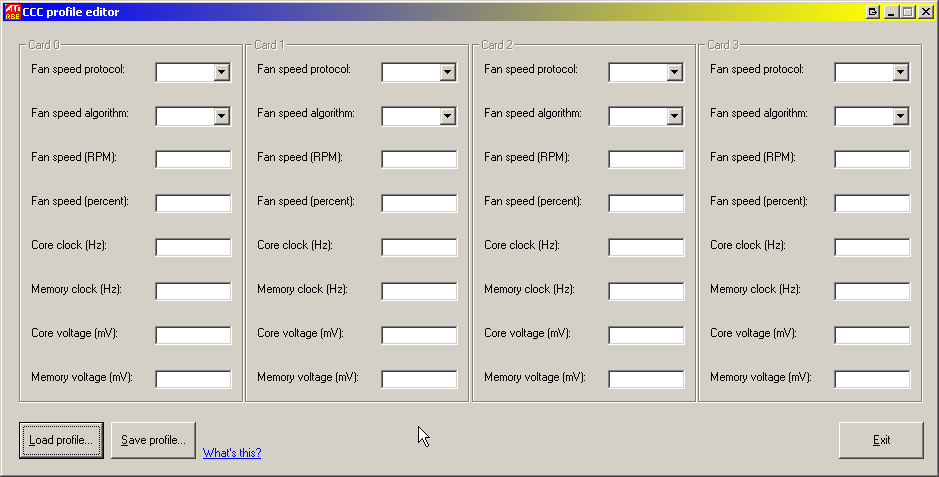The AMD Radeon BIOS Editor (RBE) is an exceptional utility specifically created for modifying BIOS settings. This software enables users to boost their graphics card’s performance and improve its effectiveness by fine-tuning various parameters. Users can adjust critical settings such as GPU and memory frequencies, fan curves, voltage levels, and power limits. Having the ability to customize these key elements is essential for improving gaming performance, increasing the efficiency of cryptocurrency mining operations, and speeding up rendering processes for creative work.

| Radeon BIOS Editor (RBE) – Comprehensive Overview | |
|---|---|
| Program Name | Radeon BIOS Editor (RBE) |
| Developer | Community-developed tool (various contributors over time) |
| Latest Stable Version | 1.28 (as of last major release) |
| Release Date | Original: ~2007; Last update: ~2013-2015 |
| License | Freeware |
| Platform | Windows (XP, Vista, 7, 8, 10, 11 with compatibility mode) |
| File Size | Approximately 1-2 MB |
| Programming Language | .NET Framework (C#) |
| PRIMARY PURPOSE | |
| Main Function | Edit and modify AMD Radeon graphics card BIOS/VBIOS firmware files |
| Target Users | Advanced users, overclockers, miners, hardware enthusiasts, modders |
| KEY FEATURES | |
| Clock Speed Modification | • Adjust GPU core clock speeds • Modify memory clock frequencies • Edit multiple PowerPlay states |
| Voltage Control | • Modify GPU voltage settings • Adjust memory voltage • Edit voltage tables for different power states |
| Memory Timings | • Edit memory strap timings • Optimize timings for mining or performance • Copy timings between different frequencies |
| PowerPlay Tables | • View and edit PowerPlay state information • Modify performance levels • Adjust power limits |
| Fan Control | • Modify fan curve settings • Adjust temperature targets • Edit acoustic limits |
| BIOS Information | • View detailed BIOS information • Check GPU specifications • Read device IDs and subsystem IDs |
| File Operations | • Load BIOS files (.rom, .bin) • Save modified BIOS • Backup original BIOS • Compare BIOS versions |
| SUPPORTED HARDWARE | |
| GPU Families | • HD 2000 series • HD 3000 series • HD 4000 series • HD 5000 series • HD 6000 series • HD 7000 series • R7/R9 200 series • R9 300 series • RX 400 series (limited) • RX 500 series (limited) |
| Best Compatibility | HD 7000 series through R9 390/390X, RX 470/480/570/580 (especially for mining optimizations) |
| Limited/No Support | RX 5000 series (RDNA), RX 6000 series (RDNA 2), RX 7000 series (RDNA 3) – these require different tools |
| RISKS & WARNINGS | |
| Bricking Risk | ⚠️ HIGH – Flashing modified BIOS can permanently damage or “brick” your graphics card |
| Warranty Void | ⚠️ Modifying BIOS typically voids manufacturer warranty |
| Hardware Damage | ⚠️ Incorrect voltage/clock settings can cause permanent hardware damage |
| System Instability | ⚠️ Can cause crashes, artifacts, system instability if configured incorrectly |
| Recommended Precautions | • Always backup original BIOS • Research thoroughly before modifications • Have dual BIOS switch available (if equipped) • Start with conservative settings • Use appropriate flashing tools (ATIFlash/AMDVBFlash) |
| COMMON USE CASES | |
| Cryptocurrency Mining | • Optimize memory timings for better hashrate • Reduce power consumption • Improve efficiency (especially Ethereum mining) |
| Overclocking | • Push GPU beyond factory limits • Achieve better gaming performance • Fine-tune voltage/frequency curves |
| Undervolting | • Reduce power consumption • Lower temperatures • Quieter operation |
| BIOS Modding | • Convert mining BIOS back to gaming BIOS • Cross-flash similar GPU models • Enable locked features |
| Troubleshooting | • Fix corrupted BIOS • Restore factory settings • Repair bricked cards (with hardware programmer) |
| ALTERNATIVES & RELATED TOOLS | |
| PolarisBiosEditor | More modern tool specifically for Polaris GPUs (RX 400/500 series) |
| Red BIOS Editor | Another community BIOS editor with similar functionality |
| ATIFlash/AMDVBFlash | Official AMD tools for flashing modified BIOS to GPU |
| GPU-Z | Tool for reading current GPU information and backing up BIOS |
| MorePowerTool (MPT) | Modern alternative for RDNA/RDNA2 GPUs without BIOS flashing |
| SYSTEM REQUIREMENTS | |
| Operating System | Windows XP or later (Windows 7/10/11 recommended) |
| Framework | .NET Framework 2.0 or higher |
| Processor | Any modern CPU |
| RAM | Minimum 512 MB (1 GB recommended) |
| Storage | 10 MB free space |
| IMPORTANT NOTES | |
| Current Status | ⚠️ Development largely discontinued; superseded by newer tools for modern GPUs |
| Best For | Legacy Radeon HD and older RX series graphics cards |
| Availability | Available on various enthusiast forums and tech sites (TechPowerUp, OverClock.net, etc.) |
| Community Support | Active communities on Reddit (r/Amd, r/overclocking), tech forums, and Discord servers |
| Skill Level Required | ⚠️ ADVANCED – Not recommended for beginners; requires technical knowledge |
Share this




